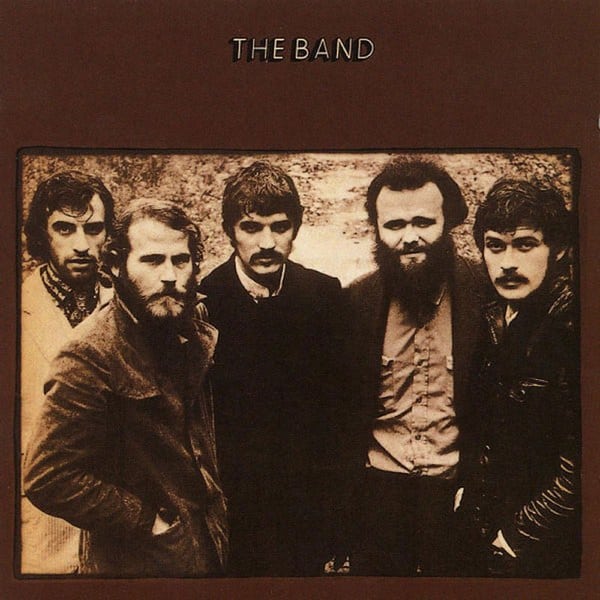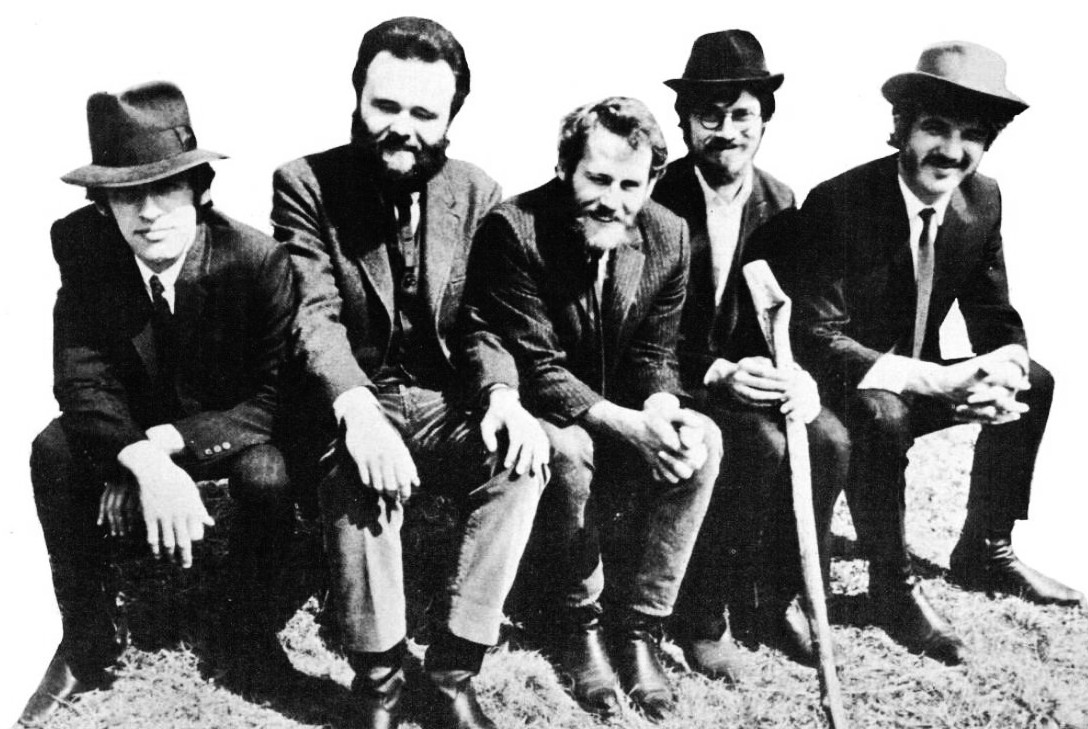Originally released on September 22, 1969, The Band’s sophomore effort, commonly known as The Brown Album, soon became the bar against which all subsequent folk/country-rock albums were measured and still are some 50 years later. Granted, being from Canada, I have a special affinity for the group, but I will try to remain objective in my commentary in so much as one can be objective when it comes to music.

By all accounts, including my own, The Brown Album is considered to be a landmark in American music, a masterpiece, having far-reaching influence like few others before it. It was so inspiring it even landed the group on the cover of Time Magazine on January 12th, 1970 with a caption that read: “The New Sound of Country Rock.” Lauded by the biggest music icons of the time, it had everything: exceptional songwriting, hyper-dexterous musicianship, and three tremendous lead singers, each with a very distinctive signature. Below are just some of the accolades conferred upon them and the record by their contemporaries.
“This is it. This is what it’s all about.”
“Their whole body of work is very important to the history of rock n roll”
- Eric Clapton
“It was timeless”
“It’s like Steinbeck, it’s like Faulkner. It’s like classic American literature”
- Bernie Taupin
Behind the incomparable songwriting of Robbie Robertson, vocalists Richard Manuel, Levon Helm, and Rick Danko, who could each carry a song by themselves, produced positively angelic harmonies when featured together . Each song is so exquisitely crafted, with such painstaking attention paid to every detail, one would be hard-pressed to pick a favorite track. Most critics agree that the record and every track on it are absolutely perfect. Could I objectively say that “Jemima Surrender” is a stronger track than “Rockn’ Chair”? Is “The Night They Drove Old Dixie Down” as told by a confederate survivor more thought-provoking than “King Harvest (Has Surely Come)” about the poor sharecropper looking to his union to save the farm? The answer is no. You, the listener, will have to decide for yourself.
“The voices just automatically went to the right place.”
- Bernie Taupin
The album charted three major hit singles: “Rag Mama Rag," "Up on Cripple Creek,” and “The Night They Drove Old Dixie Down,” and as a whole received very generous airplay on all the popular FM stations of the time.
So that’s the backdrop. That’s where the musical bar had been set and to mess with it would be a risky endeavor indeed. Along comes this new release, re-issued to commemorate the 50th anniversary of this most iconic of albums. In general, these anniversary box sets are becoming overloaded with poor quality filler tracks for no other reason than to justify the exorbitant cost of the packages. And this one is no exception. Being listed at around $100 (I’ve seen it as high as $150), a full 50% of the tracks are “extras” or “Bonus Tracks” as the label likes to call them. Even the painful sounding Woodstock set was included, and it borders on the inaudible. Truthfully, I am surprised that Robbie even agreed to release these songs. There’s a good reason why none of these tracks ever made it onto the original studio albums. They simply weren’t good enough.
The good news, if you consider it good, is that the Blu-ray audio content includes a 5.1 surround sound mix with six bonus tracks and a brand new stereo mix of the album by Bob Clearmountain who has already been credited with remixing The Band’s debut album for a 50th anniversary reissue of Music from Big Pink. The problem is that neither mix on the Blu-ray provides any real value to the consumer.
Here’s my problem with it. It’s actually more of a musical contradiction, and it has nothing to do with the actual listening experience of the 5.1 re-mix. As they go, this one is just fine. The problem is that it is thoroughly unnecessary. Not every album is suited to be delivered in 5.1 surround and The Brown Album is one such recording. In this case it does nothing to improve the product and it runs contrary to the musical philosophy of Robbie Robertson and The Band’s music as it was originally intended. This record was meant to be holistic, meaning that the whole was to be more than merely the sum of its parts, and the same could be said of the group’s membership. The focus of the listener was intended to be aimed directly at the songs, as Robbie himself says in the documentary, which is included in the package, and sadly the immersive mix deviates from this approach. The listeners’ focus is forced to shift toward where each of the channels is drawing it, and away from the songs as undivided elements.
“The emphasis at this point was much more on the songs. I wanted the songs to be built around the songs themselves and whatever I or anybody else played, it was really just to say we are playing this song and you could hear the music with the singing or without the singing and it is the same song.”
- Robbie Robertson
“More like making music and less like making tracks”
- Levon Helm
“It was a clubhouse mentality”
- Don Was
Collectively the members of The Band worked tirelessly to achieve a very particular sound, one that they had pre-determined, and with the immersive re-mix in 5.1, that sound has been altered. This may sound overstated but the vocals and music are much too pristine, almost brittle. It’s all too far in the front when it should sound subdued and distant. The instrumentation is too channeled when it should be bound together. Robbie was in fact looking for a subtle sound and Levon once said he continuously strived to sound like he was playing in a box, while Rick liked his bass sound deep and muted. The 5.1 mix diametrically opposes these notions.
“It was an approach to playing where it’s so delicate, it’s like you have to hold your breath. You can’t breathe or you’ll throw yourself off. The opposite of the in your face playing that I used to do.”
- Robbie Robertson
“I like that sort of a dull thud sound with lots of wood.”
“I got my drums sounding the way I always wanted them. There’s enough wood in the sound and you could hear the stick and the bell of the cymbal.”
- Levon Helm
“This is the way it sounds live and this is the way it should be”
- Robbie Robertson
I do want to give credit to Bob Clearmountain for even attempting to improve the sound of an album already considered a masterpiece. I have listened to every track at least 5 times through the Datasat RS20i and Sennheiser MOMENTUM 3 headphones and even did a track by track comparison with the last stereo re-mastering done in 2000, which was actually mixed at double the bitrate implying less loss. My ear detects no discernable improvement other than an iota of increased sharpness. This outcome is quite understandable as Mr. Clearmountain was likely cautious not to tinker too much. The audio metrics from the analysis are provided below:
The 5.1 Surround M2TS File

The Stereo Remastered Flac Files

Before concluding this piece, I respectfully ask the readership to permit me a brief social commentary. The recent influx of anniversary issues has obviously been focused on the boomer demographic as they were the primary buyers when these albums were originally released. Sadly, it is becoming little more than the exploitation of their nostalgia at a very hefty price. I would venture to guess that much of this market lacks the hardware to even reproduce this type of dynamic range so what are they really buying? Not to mislead anyone, there are some spectacular immersive re-mixes out there but invariably they are of particular genres and not just arbitrarily released because they sold a ton of units 40 or 50 years ago.

